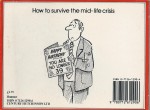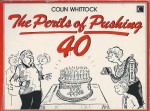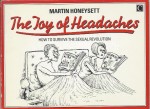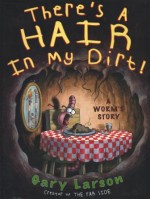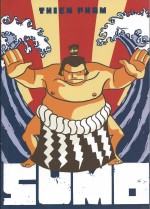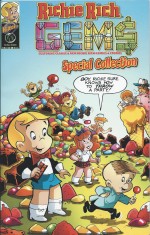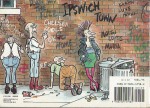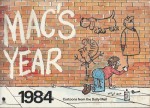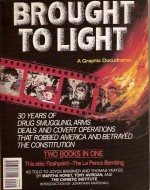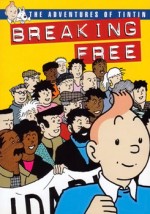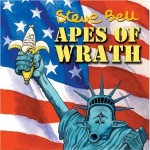
By Dr. Alan Mumford (Centre for the Study of Cartoons & Caricature, U of K,Canterbury)
ISBN: 978-1-90267-120-8
“True patriotism hates injustice in its own land more than anywhere else†– Clarence Darrow
From its earliest inception cartooning has been used to sell: initially ideas or values but eventually actual products too. In newspapers, magazines and especially comicbooks the sheer power of narrative with its ability to create emotional affinities has been linked to the creation of unforgettable images and characters. When those stories affect the daily lives of generations of readers, the force that they can apply in a commercial or social arena is almost irresistible…
InBritainthe cartoonist has held a bizarrely precarious position of power for centuries: the deftly designed bombastic broadside or savagely surgical satirical slice instantly capable of ridiculing, exposing and always deflating the powerfully elevated and apparently untouchable with a simple shaped-charge of scandalous wit and crushingly clear, universally understandable visual metaphor.
For this method of concept transmission, literacy or lack of education is no barrier. As the Catholic Church proved millennia ago with the Stations of the Cross, stained glass windows and a pantheon of idealised saints, a picture is absolutely worth a thousand words…
More so than work, sport, religion, fighting or even sex, politics has always been the very grist that feeds the pictorial gadfly’s mill. This gloriously informative book (sponsored by the marvellous Centre for the Study of Cartoons and Caricature, University of Kent at Canterbury), offers a fantastic overview of political adaptability and cultural life as Britain moved from Empire to mere Nationhood in the latter half of the 20th century, examined through General Elections and the wealth of cunningly contrived images and pictorial iconography they provoked and inspired.
After an effusive Foreword by professional politician and celebrated cartoon aficionado (the Rt. Hon.) Lord Kenneth Baker of Dorking, author Alan Mumford – a specialist in management training – covers the basic semiology and working vocabulary of the medium in his copious Introduction.
Designating definitions and terms for the treatise, he subdivides the territory into ‘Origins’, ‘Criteria for Selection’, ‘Newspapers and Magazines’, ‘The Longevity of Political Cartoonists’, ‘References, Symbols and Metaphors’, ‘The Impact of Cartoons on General Elections’ and ‘Savagery in Political Cartoons’ as a very effective foundation course in how to best contextualise and appreciate the plethora of carefully crafted mass-market messages which follow.
The format is extremely ergonomic and effective. Thus Philip Zec’s iconic cartoon and caption/slogan “Here You Are. Don’t Lose it Again!†begins the Great Endeavour with historical background in The Run-up to the General Election of 1945, followed by Election Issues and the 1945 Campaign, major Personalities of the 1945 General Election, Results of… and finally a nominated “Cartoonist of the Election†whose work most captured the spirit of or affected the outcome of a particular contest.
This methodology then proceeds to efficiently and comprehensively recreate the tone of each time, augmented whenever possible by a personal interview or remembrance from one of the campaigners involved. These telling vignettes include contributions from Frank Pakenham/Lord Longford, Barbara Castle, Edward Heath, Denis Healey, Roy Jenkins, Kenneth Baker again, Jim Callaghan, Jim Prior, Margaret Thatcher, David Steel, Norman Tebbit, John Major and Tony Blair…
Each fact-packed, picture-filled chapter then dissects every succeeding campaign: 1950’s tame ‘Consolidation not Adventure’ which resulted in Labour and Clement Attlee’s second victory by the narrowest – practically unworkable – of margins, Churchill’s resurgence in 1951 as ‘The Grand Old Man Returns’ and a slow steady decline in fortunes and growth of a New Politics as Anthony Eden’s star rose for the 1955 General Election when ‘The Crown Prince Takes Over’…
In an era of international unrest Harold McMillan eventually rose to become Tory top gun and in 1959 was ‘Supermac Triumphant’, but domestic troubles – race, unionism and the always struggling economy – wore away his energies. In a minor coup he was ousted andSirAlecDouglasHome took over mid-term, consequently losing to glib, charismatic new Labour leader Harold Wilson.
This entire era is one of aged and infirm Big Beasts passing away suddenly with too many lesser lights to succeed them; further complicated by both Labour and Conservative parties rent by infighting and jockeying for position with wannabe upstarts such as the Liberals cruising the room looking to pick up what scraps they could (so it’s not a new thing, OK?).
In 1966 “Labour Government Works†took Labour to a second term but social turmoil in the country, with unions demands spiralling out of control, enabled Edward Heath to lead the Conservatives into the most dangerous and turbulent decade in modern British history. The General Election of 1970 proved ‘Wilson Complacent, Heath Persistent’…
There were two General Elections in 1974.
A massive ongoing crisis in industrial relations and the growing racial tension caused by maverick Tory Enoch Powell’s continual cries to “end Immigration or face rivers of blood in the streets†forced Prime Minister Heath to ask in February ‘Who Governs Britain?’ He was informed by the disaffected electorate “Not you, mate.â€
Even though Wilson and Labour were returned to power, the majority was miniscule and by October the people were compelled to do it all again and ‘Vote for Peace and Quiet’.
Although he’d again narrowly led them to victory, Wilson’s time was done and he abruptly resigned in 1976 to be replaced by deputy Jim Callaghan.
Heath too was reduced to the ranks and relegated to the Tory Back benches, replaced by a rising star from Finchley. As Britain staggered under terrifying economic woes in 1979, Callaghan called an election and lost to Margaret Thatcher who had famously said “No Woman in My Time†would ever be Prime Minister. I think that was the last time she ever admitted to being wrong…
Despite horrifying and sustained assaults on the fabric of British society – and great unpopularity – she enjoyed two more election victories: in 1983 “The Longest Suicide Note in History†and again in 1987 as ‘Thatcher Moves Forward’ before finally being turned on by her own bullied and harried cabinet.
The best political cartooning comes from outrage, and the Tory administrations of the 1980’s provided one bloated, bile-filled easy mark after another. Just look at TV’s Spitting Image which grew fat and healthy off that government’s peccadilloes, indignities and iniquities (as well as Reagan’sAmerica and the Royal Family) in just the way that millions of unemployed and disenfranchised workers, students and pensioners didn’t. The election cartoons reproduced here from that period, come from a largely Tory Press, and whilst contextualised and accurate don’t approach the level of venom she engendered in certain sections.
For a more balanced view one should also see Plunder Woman Must Go! by Alan Hardman, Drain Pig and the Glow Boys in Critical Mess, You are Maggie Thatcher: a Dole-Playing Game or even Father Kissmass and Mother Claws by Bel Mooney & Gerald Scarfe, not to mention any collection of the excoriating Steve Bell’s If…
In 1992 the only thing stopping a Labour landslide was the party itself, which had so dissolved into factional infighting and ideological naval-gazing that not even the fiery oratory of Welsh Wizard Neil Kinnock could pull them together. Once again however the newspapers claimed the credit when Tory consensus/concession leader John Major pulled off a surprising ‘Triumph of the Soapbox?’
That Labour Landslide had to wait until 1997 and the ‘Teeth and Sleaze’ of Tony Blair (although at that time we all thought the latter term only applied to corrupt Tory MPs selling parliamentary time and attention to business interests) which brings this incredibly appealing tome to a close. Since then a whole lot has happened and I think it’s long past time for a new, revised and updated edition…
As well as making addictively accessible over half a century of venal demagoguery, hard work, murky manipulations, honest good intentions and the efforts of many men and women moved in equal parts by dedication and chicanery, this oversized monochrome tome is also literally stuffed with the best work some of the very best cartoonists ever to work in these Sceptred Isles.
The art, imagination, passion and vitriol of Abu, Steve Bell, Peter Brookes, Dave Brown, Michael Cummings, Eccles, Emmwood, Stanley Franklin, George Gale, Nick Garland, the Davids Gaskill and Ghilchik, Les Gibbard, Charles Griffin, Graham High, Leslie Illingworth, Jak, John Jensen, Jon, Kal, David Low, Mac, Mahood, Norman Mansbridge, Sidney Moon, Bill Papas, Chris Riddell, Paul Rigby, Rodger, Stephen Roth, Martin Rowson, Willie Rushton, Peter Schrank, Ernest Shepard, Ralph Steadman, Sidney Strube, Trog, Vicky, Keith Waite, Zec and Zoke are timeless examples of the political pictorialist’s uncanny power and, as signs of the times, form a surprising effecting gestalt of the never happy nation’s feeling and character…
None of that actually matters now, since these cartoons have performed the task they were intended for: shaping the thoughts and intentions of generations of voters. That they have also stood the test of time and remain as beloved relics of a lethal art form is true testament to their power and passion, but – to be honest and whatever your political complexion – isn’t it just a guilty pleasure to see a really great villain get one more good kicking?
Stuffed with astounding images, fascinating lost ephemera and mouth-watering tastes of comic art no fan could resist, this colossal collection is a beautiful piece of cartoon history that will delight and tantalise all who read it… and it’s still readily available through the University of Kent’s website…
© 2001. Text © 2001 Alan Mumford. All illustrations © their respective holders or owners. All rights reserved.
